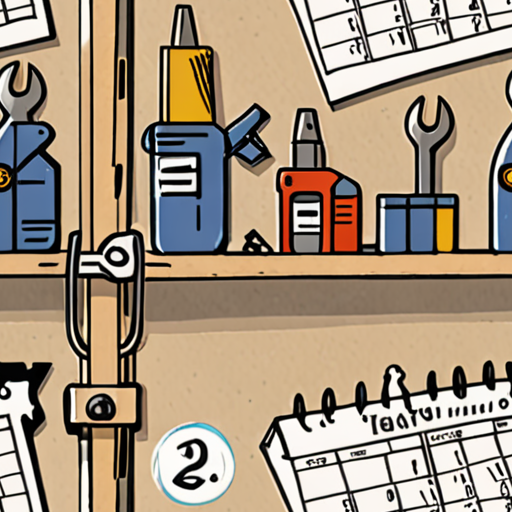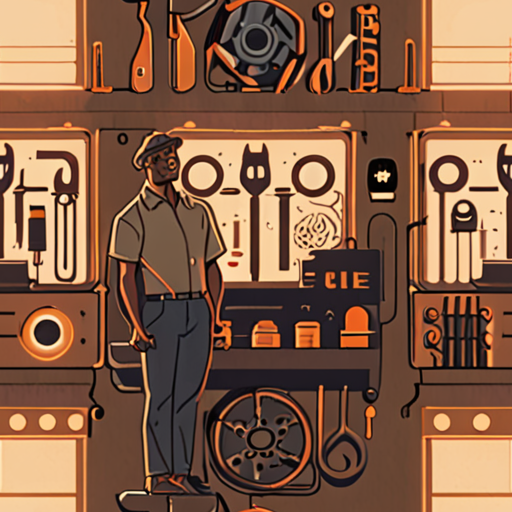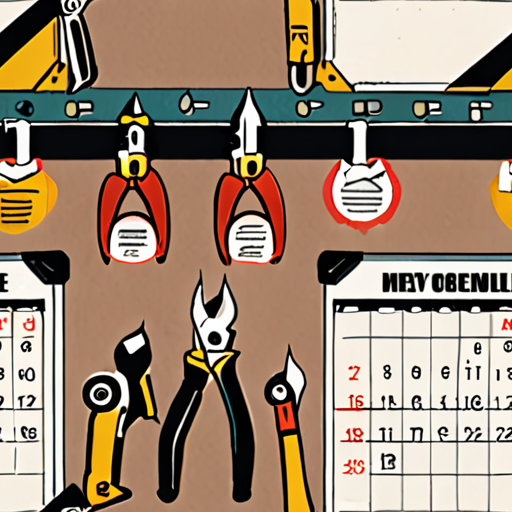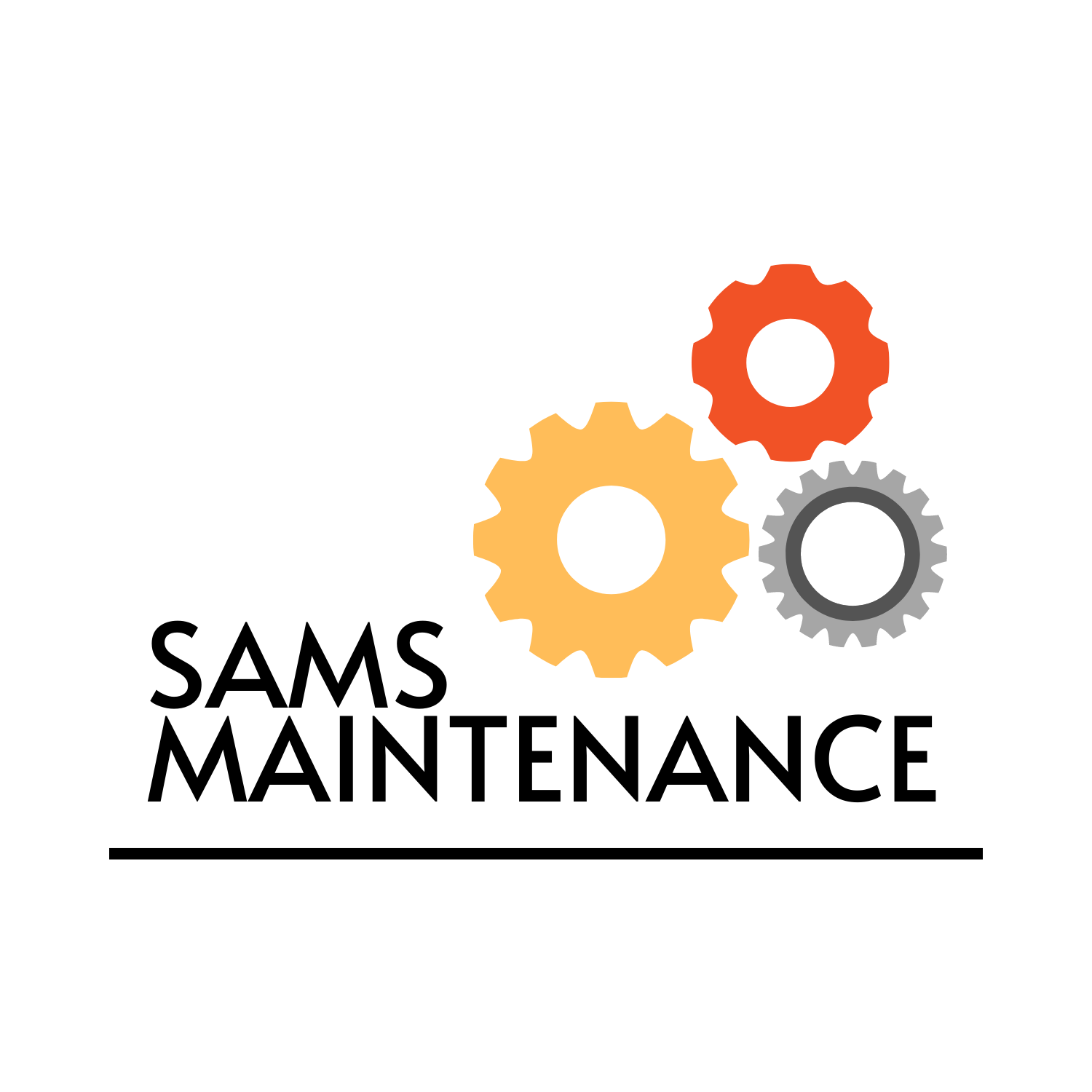Mastering the art of DIY maintenance can seem daunting, but with the right approach, it can save you time, money, and stress in the long run. By creating proactive checklists and sticking to routine tasks, homeowners and vehicle owners alike can stay on top of their maintenance needs and avoid costly repairs down the line. In this comprehensive guide, we’ll explore the ins and outs of DIY maintenance, from creating effective checklists to understanding the importance of regular upkeep.

Creating a Comprehensive Maintenance Checklist
I’m often asked how to create a preventive maintenance checklist, and I’m happy to share my expertise with you.
-
Step 1: Identify Critical Systems and Equipment
Start by making a list of critical systems and equipment in your home or facility, such as HVAC units, plumbing fixtures, electrical panels, and appliances.
-
Step 2: Determine Maintenance Frequency
Determine how often each item on your list needs to be maintained, whether it’s daily, weekly, monthly, quarterly, or annually.
-
Step 3: Assign Tasks and Responsibilities
Assign tasks and responsibilities to team members or individuals, making sure everyone knows what’s expected of them.
-
Step 4: Schedule Regular Inspections
Schedule regular inspections to catch potential issues before they become major problems.
-
Step 5: Review and Update the Checklist
Regularly review and update the checklist to reflect changes in your systems and equipment, as well as new technologies and best practices.
At Sams Maintenance , we understand the importance of preventive maintenance in extending the lifespan of your systems and equipment, reducing downtime, and saving money in the long run.
We recommend checking out our DIY repair guides for helpful tips and tutorials on performing routine maintenance tasks yourself.
Additionally, consider consulting with a professional contractor or maintenance expert to get personalized advice on creating a customized maintenance plan tailored to your specific needs.
By following these steps and staying on top of your maintenance schedule, you’ll be able to enjoy a safer, more efficient, and more cost-effective operation.
Recommended Tools and Resources:
- Preventive Maintenance Checklist Template
- Preventive Maintenance Tips Videos
- Preventive Maintenance Software
The 1 Rule for Home Maintenance
As a homeowner, it’s essential to set aside funds for home maintenance to prevent costly repairs down the line.
- According to experts, the 1 rule for home maintenance is to allocate 1% of the total purchase price of your home annually for repairs and replacements.
- This translates to saving $2,500 annually for a $250,000 home, which works out to approximately $209 per month.
- Keep in mind that this is a rough estimate and doesn’t account for labor costs, materials, or other factors that may impact your home’s maintenance needs.
- For instance, if you live in an area prone to extreme weather conditions, you may need to factor in additional expenses for storm damage or roof replacements.
- Additionally, regular maintenance tasks like HVAC filter replacements, gutter cleaning, and pest control services can also eat into your allocated funds.
- To stay on top of these expenses, consider setting up a separate savings account specifically for home maintenance and reviewing your budget regularly to adjust as needed.
- By prioritizing home maintenance, you’ll be better equipped to handle unexpected repairs and keep your home in excellent condition, ultimately saving you money and stress in the long run.
At Sam’s Maintenance, we recommend consulting with a professional contractor or handyman to get a more accurate assessment of your home’s maintenance needs and develop a personalized plan to tackle them.
Remember, a well-maintained home is a happy home!

Adding DIY Maintenance to Carfax
To add DIY maintenance to Carfax, simply log in to your account and navigate to the “Service History” section.
- Click on the “Add Service Record” button to begin entering your DIY service details.
- Select the type of service performed, such as oil change, tire rotation, or brake pad replacement.
- Enter the date and mileage of the service, as well as any notes or descriptions of the work done.
- Save your changes to update your vehicle’s service history.
For more information on how to manage your vehicle’s service history, visit our service history management guide .
Additionally, you may want to consider consulting with a mechanic or automotive professional for guidance on performing complex DIY tasks.
Some popular resources for DIY car maintenance include:
- ChiltonDIY
- Haynes Manuals
- Autotrader DIY Maintenance Guide
Remember to always follow safety guidelines and manufacturer recommendations when performing DIY car maintenance.
Benefits of Adding DIY Maintenance to Carfax
By adding DIY maintenance to Carfax, you can:
- Keep track of your vehicle’s maintenance history
- Identify potential issues before they become major problems
- Save money by performing routine maintenance tasks yourself
- Improve your vehicle’s resale value by documenting its maintenance history
Tips for Effective DIY Car Maintenance
To get the most out of your DIY car maintenance efforts, be sure to:
- Consult your owner’s manual for recommended maintenance schedules and procedures
- Invest in high-quality tools and equipment
- Follow proper safety protocols when working with chemicals and power tools
- Keep detailed records of your maintenance activities

Daily Maintenance Checklist
As a homeowner or DIY enthusiast, staying on top of daily maintenance tasks can seem overwhelming, but it doesn’t have to be.
- Inspect and Maintain Appliances
- Clean the oven and stove regularly to prevent grease buildup and food residue.
- Check and replace air filters in your HVAC system, vacuum cleaner, and air purifiers.
- Run a cleaning cycle on your dishwasher and washing machine every month.
- Check and Replace Filters
- Replace furnace filters every 1-3 months depending on usage.
- Change water filters in your refrigerator and ice maker every 6-12 months.
- Update your vacuum cleaner’s HEPA filter every 6-12 months.
- Monitor and Maintain Plumbing Systems
- Check for signs of leaks under sinks, around toilets, and near water heaters.
- Drain and flush your water heater every 6-12 months.
- Disconnect and drain hoses from outdoor faucets during winter months.
- Keep Your Home Clean and Organized
- Schedule regular deep cleans for high-traffic areas and surfaces.
- Organize your garage, attic, and basement to reduce clutter and improve accessibility.
- Implement a “one-touch” rule for cleaning and organizing to maintain a tidy space.
- Stay on Top of Seasonal Tasks
- Schedule annual HVAC maintenance before peak seasons.
- Prepare your home for extreme weather conditions by sealing gaps and cracks.
- Perform routine pest control measures to prevent infestations.
Regularly check your appliances for wear and tear, clean filters, and replace worn-out parts to ensure they continue running efficiently.
Frequent filter replacements can save you money on energy bills and extend the lifespan of your appliances.
A well-maintained plumbing system can prevent costly leaks and water damage.
A clutter-free home reduces stress and makes it easier to find what you need when you need it.
Seasonal maintenance ensures your home remains safe, efficient, and comfortable throughout the year.
By incorporating these daily maintenance tasks into your routine, you’ll enjoy a safer, healthier, and more efficient living space.
What Maintenance Does My Car Need at 100k?
At 100,000 miles, your car requires regular maintenance to ensure its longevity and optimal performance.
-
Oil Change
Change your oil every 5,000 to 7,500 miles to prevent engine damage and maintain fuel efficiency.
-
Tire Rotation
Rotate your tires every 12,000 to 15,000 miles to ensure even tread wear and extend tire life.
-
Belt Replacements
Replace your serpentine belt and timing belt according to the manufacturer’s schedule to prevent breakdowns and costly repairs.
-
Fluid Checks
Check your coolant, transmission, and brake fluid levels regularly to prevent overheating and premature wear.
-
Air Filter Replacement
Replace your air filter every 15,000 to 30,000 miles to maintain fuel efficiency and engine performance.
-
Spark Plug Replacement
Replace your spark plugs every 30,000 to 100,000 miles to maintain engine performance and prevent misfires.
-
Brake Pad Replacement
Inspect and replace your brake pads every 30,000 to 50,000 miles to ensure safe braking performance.
-
Cabin Air Filter Replacement
Replace your cabin air filter every 12,000 to 18,000 miles to maintain indoor air quality and comfort.
-
Wheel Bearing Inspection
Inspect your wheel bearings every 50,000 to 75,000 miles to prevent premature wear and costly repairs.
-
Timing Chain Tensioner Replacement
Replace your timing chain tensioner every 60,000 to 90,000 miles to prevent engine damage and costly repairs.
Regular maintenance at 100,000 miles can help prevent costly repairs, extend your car’s lifespan, and maintain its overall performance.

What is an Equipment Maintenance Checklist?
An equipment maintenance checklist is a detailed record that lists a series of maintenance tasks for a specific asset. Its purpose is to guide technicians and maintenance teams in creating consistent and reliable maintenance procedures within a facility or enterprise.
- The checklist typically includes routine inspections, cleaning, lubrication, and replacement of parts, as well as any necessary repairs or adjustments.
- Regular maintenance helps prevent equipment failure, reduces downtime, and extends the lifespan of assets.
- A well-maintained equipment checklist can also improve safety, reduce energy consumption, and minimize environmental impact.
Components of an Effective Equipment Maintenance Checklist:
- Schedule and Frequency: Regular maintenance schedules and frequencies should be established based on manufacturer recommendations, usage patterns, and operational conditions.
- Tasks and Procedures: Clear instructions and step-by-step procedures should be outlined for each task, including any necessary tools, materials, and personal protective equipment.
- Inspections and Testing: Routine inspections and testing should be performed to identify potential issues before they become major problems.
- Record Keeping: Accurate records of maintenance activities, including dates, times, and personnel involved, should be kept for future reference and compliance purposes.
Benefits of Implementing an Equipment Maintenance Checklist:
- Improved Reliability: Regular maintenance ensures that equipment operates efficiently and effectively, reducing the risk of breakdowns and downtime.
- Increased Productivity: Well-maintained equipment enables workers to complete tasks faster and with greater accuracy, leading to increased productivity and efficiency.
- Reduced Costs: Preventative maintenance saves money by avoiding costly repairs, replacements, and downtime associated with equipment failures.
Best Practices for Creating an Equipment Maintenance Checklist:
- Involve Stakeholders: Engage with maintenance personnel, operators, and supervisors to gather input and ensure that the checklist meets the needs of all stakeholders.
- Review and Update Regularly: Periodically review and update the checklist to reflect changes in equipment, processes, or regulatory requirements.
- Train Personnel: Provide training and guidance to maintenance personnel on the use and implementation of the checklist.
Conclusion:
A well-designed equipment maintenance checklist is essential for ensuring the reliability, efficiency, and longevity of assets. By incorporating regular inspections, cleaning, lubrication, and replacement of parts, as well as any necessary repairs or adjustments, organizations can reduce downtime, save costs, and improve overall productivity. By following best practices and involving stakeholders, organizations can create effective checklists that meet the unique needs of their operations.

0 Comments